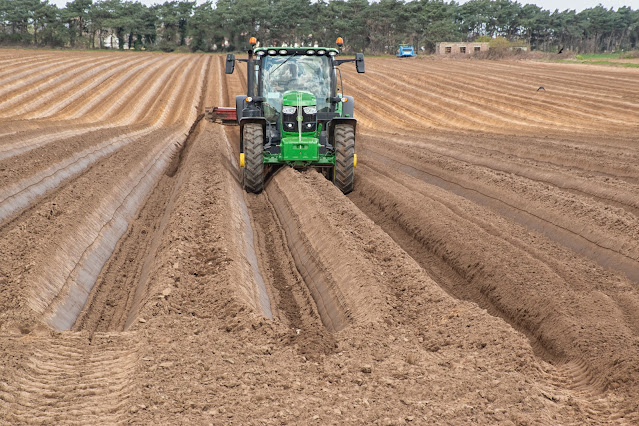My photographic diary - a record of places visited and things seen, including the history found in our many villages, and nature in its many forms. They are, above all, my memories --- "For what is a person without memories? - a ghost, trapped between worlds, without an identity, with no future, no past"
Thursday, 4 May 2023
To the woods to see the Bluebells - and more.
Sunday, 23 April 2023
Agriculture - April Gill Moon Challenge
This Challenge gave me a rather tough time as there is not a lot happening on the fields around here in April. Fields have mostly started to grow, so maybe some spraying but not a lot else. However, a few drives around the area gave us some ideas, as we could include animals, machinery, and the like. Anything, in fact, that said `agriculture`.
The first port of call was a field with five, (yes five!) tractors in it, mounding up potatoes. The patterns created were interesting, so to start, a few images of them in action.
Next port of call was a local farmyard, but I personally couldn't find much of inspiration here. However, some images to contemplate.
Then some old farm machinery.
So, as for the challenge, I have some ideas, even if I do not actually use these images. However, I have not found a lot of inspiration in the subject at this time of year. Summer, with crops abounding and fields being cut and all the activity surrounding that, would certainly give more scope I believe. Plus, there would be a lot more animals in the fields. Never mind, it has been fun!
Friday, 3 March 2023
Pin Mill 50mm Challenge - with Gill Moon

Monday, 13 February 2023
Snowdrops at Hedingham Castle
Friday, 3 February 2023
Detail - Southwold with Gill Moon
This morning was spent wandering the river side in Southwold with a brief of `DETAIL` as our objective. It's interesting what you actually see when looking closely at things you normally just give a casual glance!
So here is my offering of things that I focused on and recorded.
It is surprising the little things, patterns or objects, which come into focus when you are concentrating like this. Well worth the effort.






















































